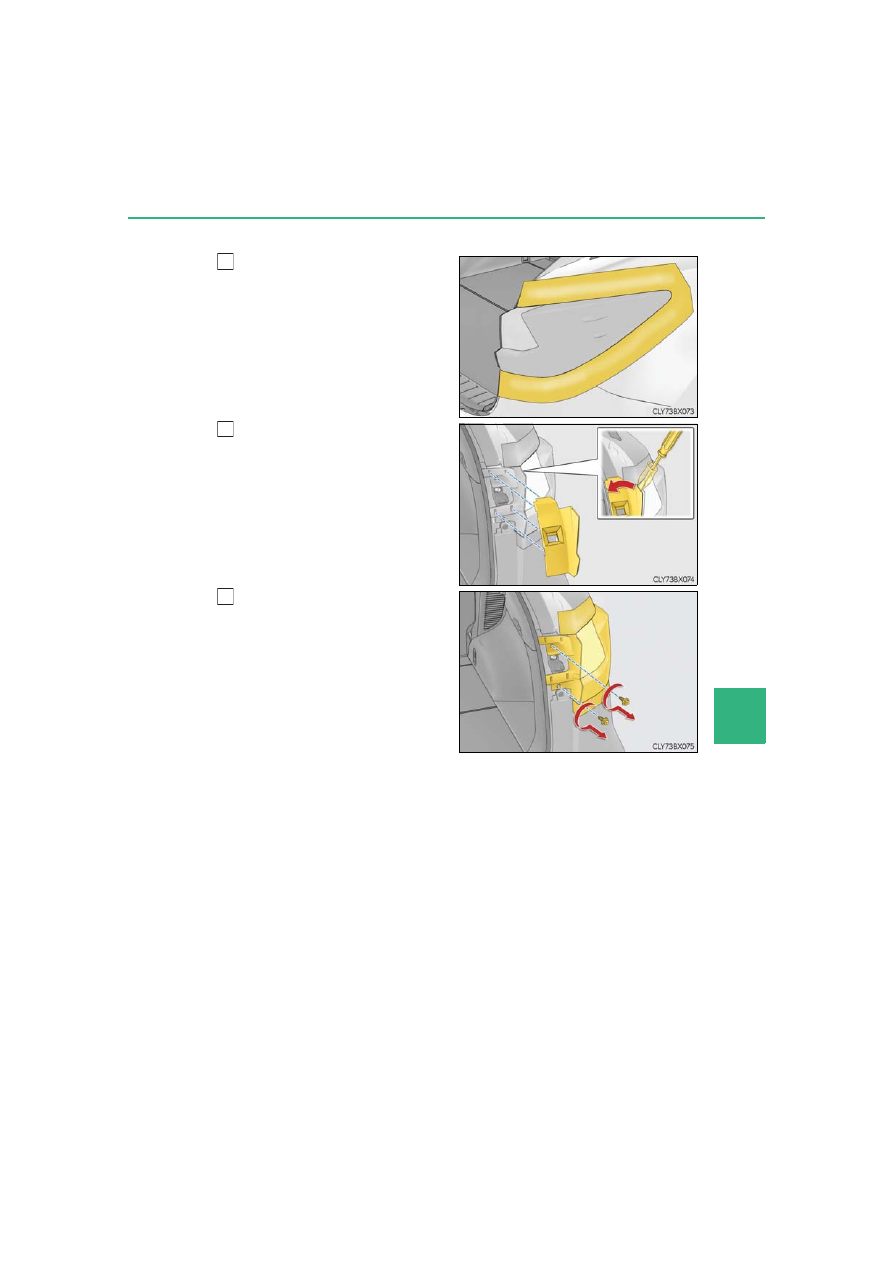LEXUS RX 350 L (2019 year). Instruction - part 40

637
7-3. Do-it-yourself maintenance
7
Main
tenance an
d care
RX350/RX350L_U
■
Rear turn signal lights (vehicles with single-beam headlights)
Open the back door and apply
protective tape to the vehicle
body around the taillight.
Use masking tape, etc. Do not use
duct tape, as it may leave residue or
damage the paint when removed.
Using a flathead screwdriver,
remove the cover.
To prevent scratching the vehicle,
wrap the tip of the flathead screw-
driver with a cloth, etc.
Remove the 2 screws.
1
2
3